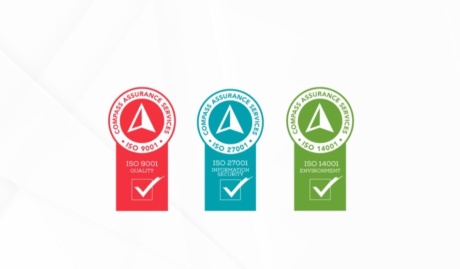Technology plays a crucial role in the success of any organisation. However, many businesses struggle with the implementation of an effective and ongoing technology strategy. The solution? A comprehensive technology roadmap!
But why is a roadmap so vital? A technology roadmap is the link between your IT strategy and the successful execution of that strategy. It’s where the rubber hits the road with practical, prioritised actions to bring your strategy to life. A technology roadmap is essential for businesses aiming to thrive and grow. By remaining competitive, fostering productivity, and ensuring robust support for future endeavours, a well-crafted roadmap paves the way for success.
Why You Need a Technology Roadmap
It’s important to understand the tangible benefits a technology roadmap brings to an organisation. A well-crafted roadmap not only guides a company through its current technology landscape but also steers it towards future growth and innovation. In the following section, we’ll explore the significant advantages of developing and maintaining a technology roadmap for your business.
- Alignment with Business Objectives: A technology roadmap ensures that your IT investments and initiatives are proactively aligned with your overall business strategy and goals.
- Improved Budgeting and Resource Allocation: By planning ahead, you can allocate your budget and resources more effectively, avoiding unexpected costs and ensuring that you have the necessary funds for critical projects.
- Enhanced Efficiency and Productivity: A well-planned technology roadmap helps you streamline your processes, automate tasks, and improve collaboration among team members, ultimately boosting efficiency and productivity.
- Cybersecurity and Risk Management: In today’s technology landscape early detection of cyber threats is crucial. A data breach incident risks suspending your daily business operations and can cost your business large amounts of money. A technology roadmap allows you to identify potential risks and vulnerabilities in your IT infrastructure and implement measures to mitigate them, safeguarding your business against potential cyber threats.
- Competitive Advantage: By staying up to date with the latest technology trends and implementing them strategically, you can gain a competitive edge in your industry. An example of this is how AI technology can transform your business productivity overnight.
Key Components of an Effective Technology Roadmap
A technology roadmap is a strategic plan that outlines how technology will be applied to support and enhance your business strategy over a specific period. It serves as a planning tool to communicate a clear IT strategy throughout your organisation. Some crucial components in the development of your roadmap include:
- Assessment of Current Technology: Start by evaluating your current technology estate, identifying any gaps or areas for improvement. This assessment should outline the following:
- Evaluation of Technologies in Use: Scrutinise the effectiveness and efficiency of each technology component in fulfilling its designated role within the business ecosystem.
- Technology Outlook: Developing a nuanced understanding of your current technology landscape is pivotal for identifying potential gaps, areas for enhancement, and opportunities for innovation.
- Alignment with Business Goals: The starting point for any technology roadmap must be the business’s goals and objectives. Whether it’s improving customer experience, increasing operational efficiency, or expanding into new markets, the roadmap should clearly illustrate how technology will help achieve these goals.
- Prioritisation of Projects: Firstly, prioritise your technology initiatives based on their impact on your business, urgency, and feasibility.
- Timeline and Milestones: An effective technology roadmap will provide a timeline that outlines when each technology initiative will begin and end. This helps businesses allocate resources efficiently and ensures that technology initiatives are aligned with business objectives in a timely manner.
- Budget and Resource Allocation: Implementing new technology can be resource intensive. A technology roadmap should include a detailed budget that covers the costs associated with each initiative, including hardware and software expenses, training costs, and additional staffing needs. It should also outline how resources will be allocated to ensure the successful execution of each technology initiative.
- Ongoing Monitoring and Adjustment: Regularly monitor your progress and make adjustments as needed to ensure that you stay on track and adapt to any changes in your business environment.
By incorporating these key components into your technology roadmap, your business can ensure that its technology investments are strategic, targeted, and aligned with long-term business goals.
Tips for Working with Trusted IT Partners To Develop Your Roadmap
When developing a technology roadmap in collaboration with IT partners, it’s essential to ensure a smooth and effective planning process. Here are some tips for working alongside your IT partners to craft an effective technology roadmap:
- Choose the Right Partner: Select an IT provider that has experience working with businesses like yours at a strategic level. It’s important for them to understand your industry’s unique challenges and opportunities. At the very least they should be willing to learn about your industry.
- Communicate Your Business Goals Clearly: Start by clearly outlining your business goals and objectives to your IT partners. This ensures that the technology solutions proposed are in line with your business’s strategic direction.
- Engage in Collaborative Planning: Involve your IT partners in the planning process from the outset. Their expertise can provide valuable insights into the latest technology trends that could benefit your business and help identify potential challenges early on.
- Set Realistic Expectations: Technology projects often encounter unforeseen challenges. Work with your IT partners to set realistic timelines and budget expectations for each initiative within the roadmap.
- Foster Open Communication: Maintain open lines of communication with your IT partner, regularly sharing updates and feedback to ensure that everyone is on the same page. Your IT partner should be willing to listen to your pain points and suggest helpful pathways to improve your IT strategy and productivity.
- Prioritise Flexibility: Technology and business needs change rapidly. Ensure your technology roadmap has the flexibility to adapt to new trends and business objectives as they arise.
- Be Open to Recommendations: Your IT partner brings valuable expertise and insights to the table. Be open to their recommendations and advice when making decisions about your technology roadmap.
- Focus on Security and Compliance: Ensure that your IT partners understand the importance of security and compliance within your industry. Incorporating these considerations from the start can prevent costly adjustments later on.
- Review and Update Regularly: Technology roadmaps are not static documents. Regular reviews with your IT partners will help you adjust your roadmap as needed, ensuring it continues to align with your business goals and the technological landscape.
By following these tips, businesses can effectively collaborate with IT partners to develop an effective strategy that not only meets their current technology needs but also positions them for future growth and innovation!

How Your Business Can Benefit From a Strategic Technology Roadmap
Having a well-defined technology roadmap is essential for any business looking to stay competitive and achieve its goals. By aligning your technology initiatives with your business objectives, prioritising projects, and working closely with a trusted IT partner, you can develop a roadmap that supports long-term success. Additionally, it will also optimise your:
- budget and resource allocation
- enhance operational efficiency and productivity
- cybersecurity & risk management
Remember to regularly review and update your plan to ensure that you stay on track and adapt to any changes in your industry or business environment. Lastly, effective collaboration with IT partners during the development of this roadmap ensures that technology initiatives remain relevant and adaptable.
These initiatives should meet current needs while also being flexible enough to accommodate future shifts. Ultimately, a technology roadmap serves as an invaluable tool for businesses seeking to fully harness technology’s potential to drive growth, innovation, and long-term success! Contact our friendly team today to discover how we can help you devise and implement a robust roadmap for your business.


























